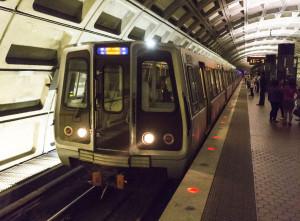
All D.C. Metro riders will be required to purchase SmarTrip cards.
The D.C. Metro board approved a decision on May 22 to eliminate the use of paper tickets, instead requiring all metro users to purchase SmarTrip cards. The change will occur over the next 18 months.
“The machinery used to process paper farecards is outdated and includes an intricate system of rollers, printers, sensors and wiring that is difficult and time-consuming to maintain when compared to the contactless SmarTrip technology,” Washington Metropolitan Area Transit Authority Public Information Officer Philip Stewart wrote in an email.
Stewart cited cost-effectiveness, durability and improved security as major factors behind the switch.
A trip on the metro rail with a paper ticket currently costs metro users $1 more than it does with a SmarTrip card. The SmarTrip card, which retails for $2, pays for itself for anyone riding at least a round trip.
Unlike a paper ticket, if a SmarTrip card is lost or stolen, users have the option of transferring the card’s remaining value onto a new card. The move will also be cost-effective for Metro, which will no longer have to pay to maintain its outdated ticket machines. 90 percent of Metro riders currently use SmarTrip cards.
The elimination of the paper farecard will also serve to help the environment and reduce unnecessary paper waste.
“Last year, Metro dispensed 14.8 million paper farecards. If laid end-to-end, the line of farecards would run from Washington, D.C. past Chicago, Ill.,” Stewart wrote. “That’s a lot of paper, and a lot of magnetic strips. Reusable SmarTrip cards reduce this waste, and tourists and riders get a more durable souvenir.”
Students have met the phasing out of the paper farecards with support.
Jacob Jensen (MSB ’16) took the Metro two to three times a week for his internship on Capitol Hill last semester, and he said that he thought the permanent switch to a SmarTrip card made the most sense financially for everyone.
“People are so rushed and they don’t really pay attention, and they just get a paper card, but a paper card usually never makes sense, so it’s a necessary change in my eyes,” Jenson said.
Even students who do not often take the metro supported the change.
“It’s a lot more efficient and it make sense because you get more value for your money in the long run, even if you use it sporadically,” Rodrigo Mercado (MSB ’17) said.
Adrienne Walker (COL ’16), who took a roundtrip on the Metro to her internship every day last semester, agreed.
“I think it’s going to be a completely positive change that I see, especially from a student standpoint. They’re so practical. … You never have to worry about a paper one, like losing that,” Walker said.




















